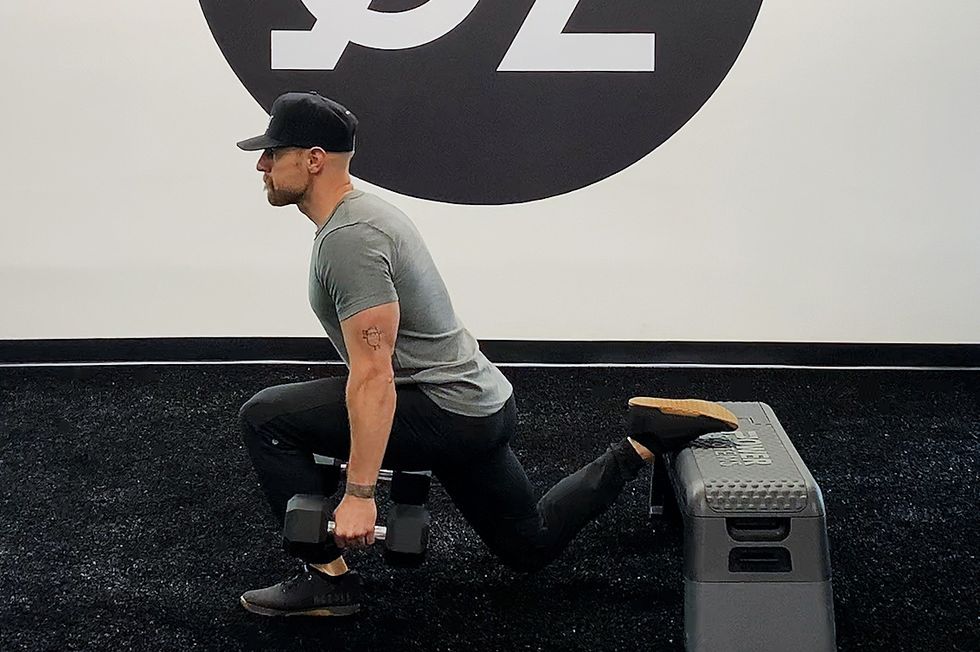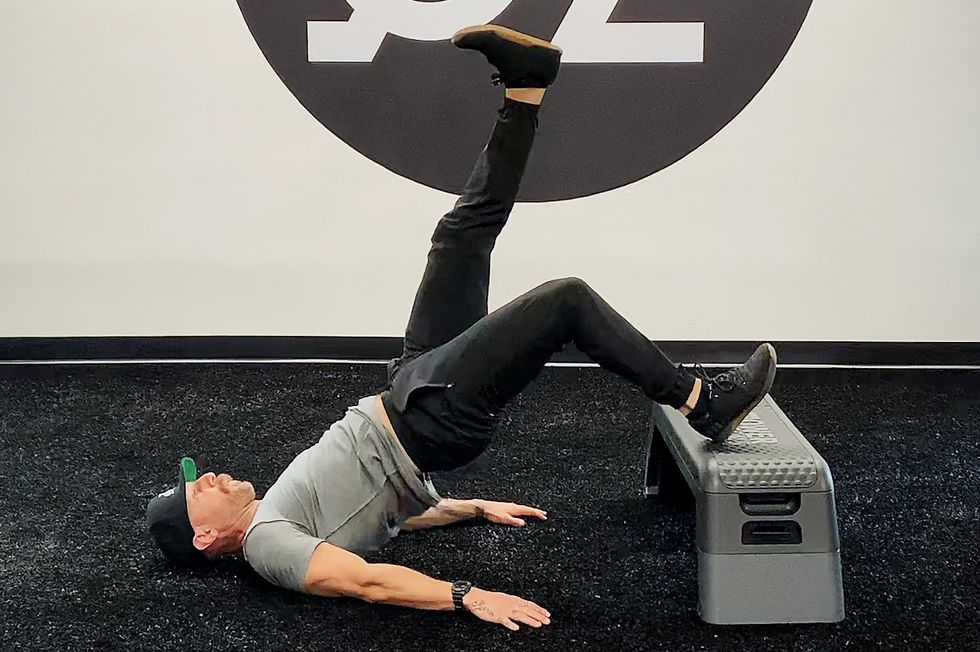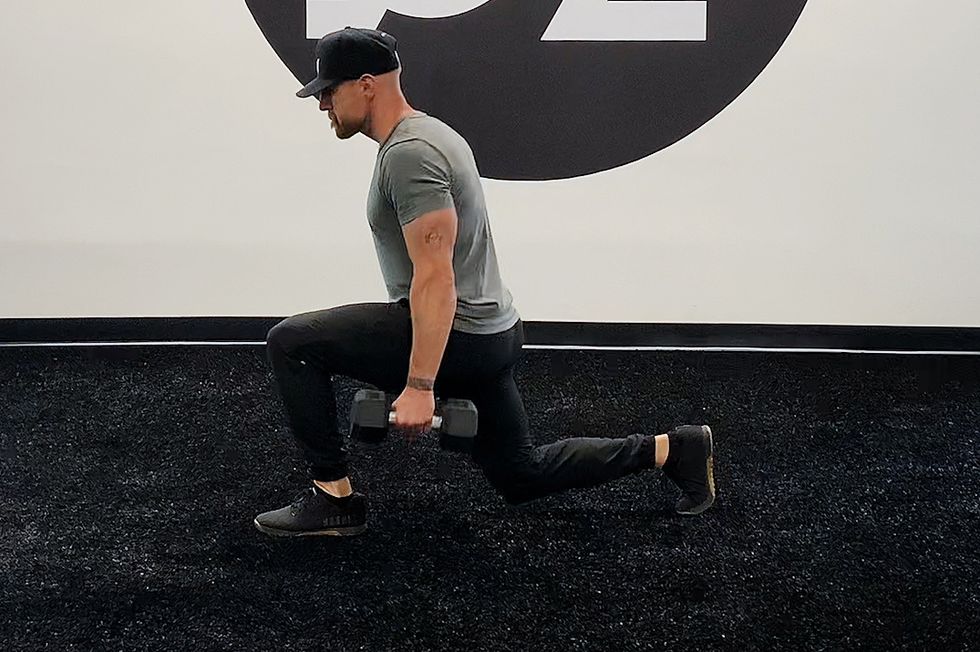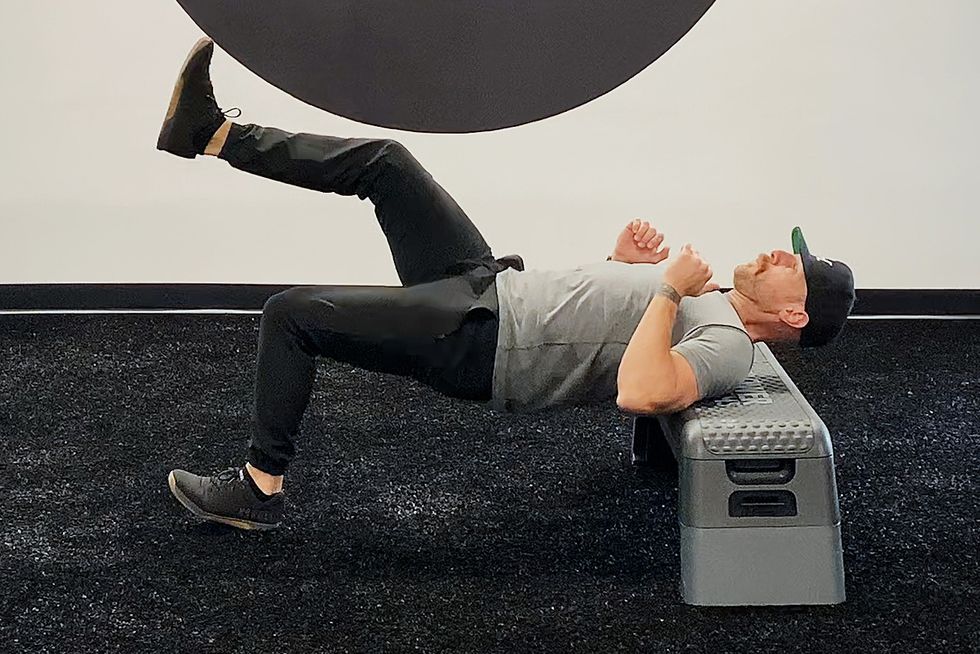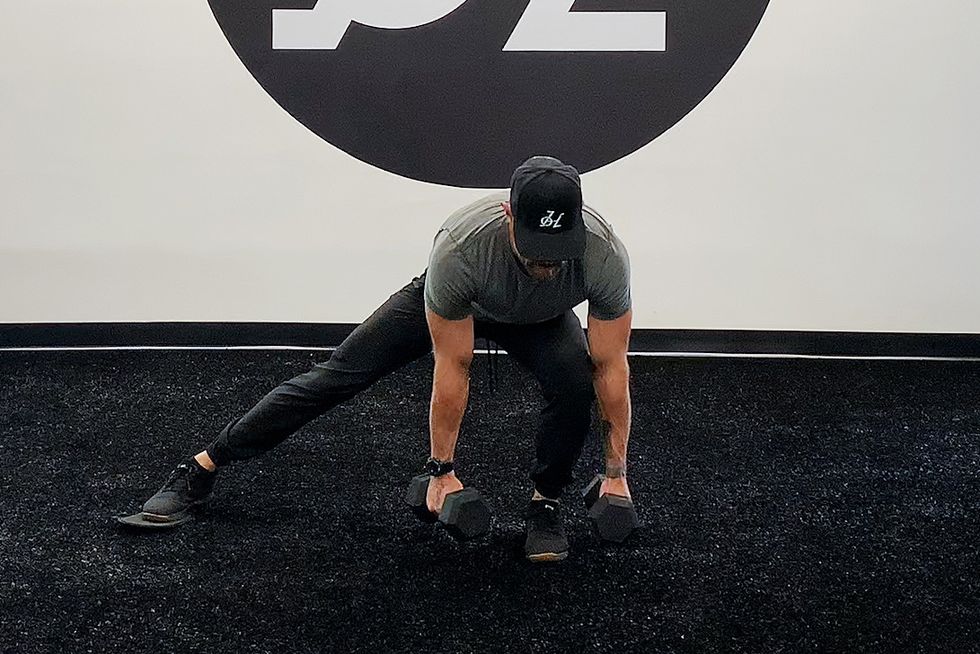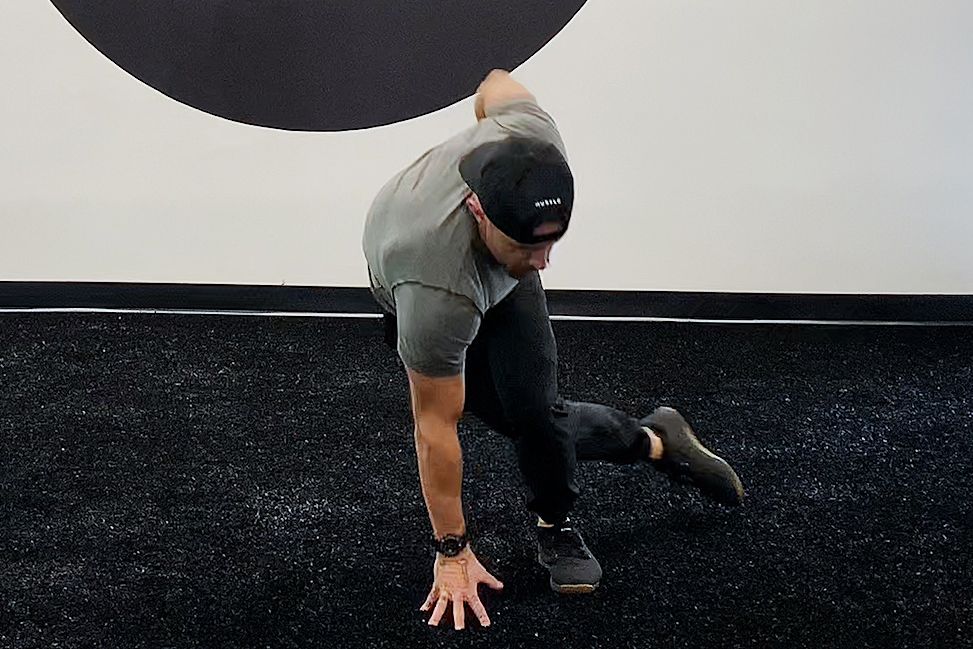A Push-Pull Leg Workout to Even Out Muscle Imbalances
Your hips and knees are begging for it.
Hear the term “push-pull” workout, and you probably think of upper-body workouts in which you superset pushing exercises, like push-ups and bench presses, with pulling movements, like chin-ups and dumbbell rows. But the time-efficient structure of a push-pull workout can (and should) be applied leg day, too, says Dane Miklaus, founder of WORK Training Studio in California.
He explains that the terms “push” and “pull” correspond with the muscle groups used to “open” and “close” a joint, respectively. For example, exercises targeting the muscles that flex or close the hip joint are considered pulling exercises, while movements that strengthen the muscles that extend or open the hips are pushing exercises.
The Benefits of a Push-Pull Leg Workout
“Each joint has its own ideal ratio as to what ‘balance’ truly means between the pushing and pulling muscles. Regardless, we want to ensure that the strength (or health) of muscles on one side of a joint is relatively similar to the muscles on the other side,” Miklaus tells Runner’s World. “Runners, like most athletes, often struggle with unnoticed or untreated muscular imbalances. If left unchecked, these imbalances can lead to poor performance, pain, or even serious injury.”
Designed by Miklaus, the following push-pull leg workout targets common areas of imbalance among runners, including the knees and hips. Most of the exercises also emphasize single-leg movements. “We recommend incorporating unilateral (one-sided) work as part of a comprehensive training program because unilateral work can specifically identify, as well as treat, any imbalances [between the right and left sides of the body],” Miklaus says.
Miklaus recommends doing this workout once a week as part of your overall strength-training program.
How to use this list: Perform these exercises as 3 separate circuits. Complete 3-4 sets of each before moving on to the next circuit.
Circuit 1:
- Bulgarian Split Squat
- Single-Leg Elevated Glute Bridge
(For each set, perform both exercises on the same leg before switching sides.)
Circuit 2:
- Lunge Press-Off
- Single-Leg Hip Thrust
(For each set, perform both exercises on the same leg before switching sides.)
Circuit 3:
- Glider Lateral Lunge
- Skater
(Perform glider lateral lunges on both sides before doing skaters.)
Each move is demonstrated by Miklaus in the video above so you can learn the proper form. You will need a set of medium-weight dumbbells; a step stool, box, or bench; gliders; and an exercise mat.
1. Bulgarian Split Squat
Why it works: “Loved and hated by athletes worldwide, the Bulgarian split squat increases time under tension of the quadriceps (the upper thigh muscles that extend the knee) and hip flexors, as there’s no true ‘resting’ position in this move,” Miklaus says. “It serves as a very effective pushing exercise for the leg and can help strengthen the front of the knee and hip.”
How to do it: Sit on a box, chair, or bench that’s about knee height, holding a dumbbell in each hand. Extend left leg, heel on the ground. Plant left foot and stand up, keeping foot where it is, so you’re standing and facing away from the box. Place top of right foot on the box behind you and allow arms to hang at sides. This is your starting position. Lower into a lunge-like position, front left knee tracking over toes, back right knee hovering just above the floor. Pause, then drive through left foot to return to starting position. Repeat. Do 10 reps. Perform an equal amount of reps on opposite side.
2. Single-Leg Elevated Glute Bridge
Why it works: This glute bridge variation works the hamstrings (upper thigh muscles on the back of the leg), both where they insert at the knee and attach at the hip, Miklaus says. It also gets the glutes involved. “Because of the knee flexion, this would be regarded as a ‘pull’ exercise that helps strengthen the posterior [muscles] of the knee and hip,” he adds.
How to do it: Lie face up, arms down by sides on the floor, knees bent, left heel planted on a box or bench that’s lower than knee height. Lift right leg up toward the ceiling. Engage glutes as you lift hips up, driving through left heel. Lower hips back to floor, and repeat for 12 reps. Perform an equal amount of reps on the opposite side with left leg up.
3. Lunge Press-Off
Why it works: “Performed with or without weight, this exercise incorporates plyometric activity at the knee joint, which is known to increase strength gains,” Miklaus says. A cue to consider about as you do this move: Place your toe against a block or other object and think about pushing your entire body off it, he suggests.
How to do it: Stand with feet hip-width apart holding dumbbells at sides. Take a large step forward with left leg and bend both knees. Legs should form 90-degree angles with left knee tracking over toes and right knee hovering above the floor. Immediately push off left foot, keeping a soft bend in knees, and hover left foot above ground. Land softly, bending knees and resuming lunge position, then immediately push off with left foot. Continue to push off front foot for 15 reps. Perform an equal amount of reps on the opposite side.
4. Single-Leg Hip Thrust
Why it works: “This exercise is similar to the single-leg elevated glute bridge lift in that the hamstrings maintain a flexed position at the knee the entire time, while most of the movement is occurring at the hips. The change in orientation, however, has most athletes feeling this more in their glutes than their hamstrings,” Miklaus says. “But both of those powerful muscle groups on the back of the leg are getting strengthened during this pulling movement.”
How to do it: Sit on the floor with knees bent and feet planted. Rest shoulders and upper back on a bench, box, or other elevated service. Lift right foot off ground. Looking down toward belly button, drive left heel into the floor, engage glutes, and lift hips, forming a straight line from shoulders to knees. Keeping right foot lifted, slowly lower hips back toward the floor. Repeat. Do 12 reps. Perform an equal amount of reps on the opposite side.
5. Glider Lateral Lunge
How to do it: Holding a dumbbell in each hand with arms at sides, stand with feet hip-width apart, right foot on a glider. Bend left knee as you push hips back and drive the right leg out to the side, keeping it straight. Lower the weights on either side of the left knee as you sit down and back as far as your mobility allows. Push through left foot and squeeze inner thighs together to draw right foot in and return to starting position. Repeat. Do 10 reps. Perform an equal amount of reps on the opposite side.
6. Skater
Why it works: “The same mechanisms and rules apply here to the ice skater as the glider side lunge,” Miklaus says, pointing to how much it targets the muscles on the back and outside of the hip, like the glute medius. “The explosive nature of this exercise and its dynamic movement in lateral and rotational planes of motion makes it a great way to finish a leg circuit.”
How to do it: Start with feet hip-width apart. Jump laterally to the left side, driving off right foot and landing lightly on left foot, body in a mini squat position. Allow right leg to drift behind left (for an added challenge, don’t let right toes touch the ground) and right fingertips to graze the floor in front of you. Immediately repeat, hopping to the right. Continue alternating. Do 30 reps total.
READ MORE ON: lower body workout strength workouts strength-training



